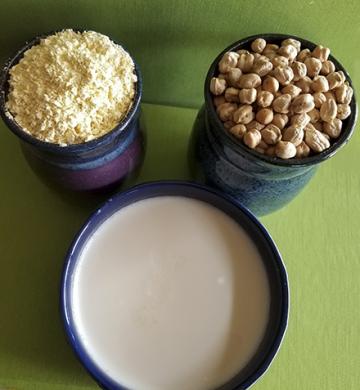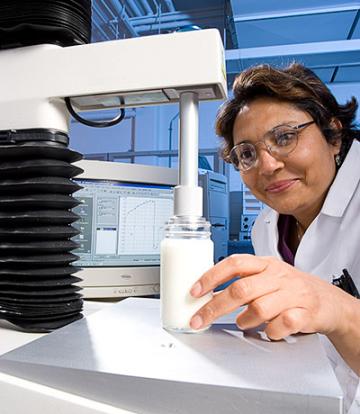How Do You Make Yogurt Even Healthier? Add Chickpea Flour
The importance of foods that are nutritious and healthy is on the minds of many Americans these days. Consumers demand food that is flavorful and tasty with health promoting properties. Yogurt, whether frozen, refrigerated, or blended into a smoothie, is one product that is getting an enormous amount of attention.
What is yogurt exactly? Yogurt is a popular dairy product obtained by fermentation of milk that is heated and mixed with good bacteria, such as Lactobacillus bulgaricus and Streptococcus thermophilus, both beneficial for digestive health. These good bacteria help keep our gut healthy.
Over the years, the popularity of yogurt in the United States has been on the rise. From 2000 to 2020, yogurt consumption in the United States has more than doubled, from 6.5 pounds per person to 13.8 pounds per person. Annual production of yogurt also has increased, from 1.84 billion pounds in 2000 to 4.52 billion pounds in 2020.
Yogurt is considered a nutrient powerhouse, so how do you make it even healthier? Well, Agricultural Research Service (ARS) scientists have found a way – by adding chickpea flour.

Yogurt fortified with Chickpea chickpea flour (lt) made from chickpeas (rt). Mukti Singh (D4824-1)
Food Technologist Mukti Singh at the ARS National Center for Agricultural Utilization Research in Peoria, IL, collaborated with the University of Central Oklahoma and Oklahoma State University on a study to evaluate the effects of adding fiber and protein-rich chickpea flour to low-fat yogurt. When adding the potentially beneficial chickpea flour to the mix, ARS scientists were determined to maintain its color, pH, and production time. The yogurt had to look good and taste good, in addition to being good for you.
The results demonstrated that adding chickpea flour to the low-fat yogurt mix promoted the growth of beneficial bacteria that is associated with improved gut health and may help prevent colon cancer, while it decreased the production time. This study also aimed to evaluate the effects of chickpea flour added to yogurt mix to increase the prebiotics. The team found that fortification of yogurt with 1% and 2% chickpea flour provided a significant improvement in the viscosity of stored yogurt. The results suggest that the addition of chickpea flour up to the 2% level can be an option to enhance the fiber and protein level of yogurt without adverse effects on product qualities and sensorial properties.
Chickpeas contain prebiotics that promote the growth of beneficial organisms in our intestines besides being high in protein and fiber, said Mukti Singh. According to the USDA FoodData Central nutrient database, raw chickpea contains 20.5% protein, 6.0% fat, 12.2% total dietary fiber, 10.7% sugars, and 57 mg calcium per 100 g. Because chickpeas contain many minerals, including calcium, magnesium, and potassium, they are considered heart healthy because they may help prevent high blood pressure, which is a major risk factor for heart disease. Plain low-fat yogurt has 5.3% protein, 0% fiber, and 183 mg calcium per 100 g.
Considering these values, an additional 1-5% chickpea flour to plain low-fat yogurt may result in an increase in fiber and protein content compared to yogurt without added chickpea flour, but without significantly affecting its appearance, aroma, texture, taste, and overall acceptability. And if you're going to dive your spoon into a cup of yogurt, why not make it as protein, fiber and mineral packed as possible?
“Yogurt is known to be nutritious and beneficial for gut health, chickpea flour enhances the benefits by the addition of prebiotics and protein content,” Singh said. – By Monica Williams, ARS Office of Communications
You May Also Like


